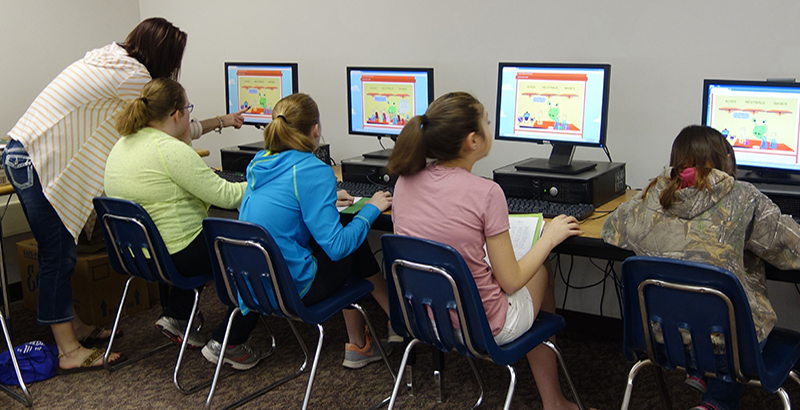Chavous: For Kids in Traditional Schools, Testing Can Be a Challenge. For Some Kids, Parents & Teachers in Online Schools, It’s a Nightmare

Imagine that a school district notifies parents that they must take their child to a location 60 miles from home for testing. Transportation will not be provided; parents are responsible for ensuring that their children arrive every day at their assigned testing site for up to a week, until all exams are complete. Families with multiple children may need to travel every day for two or three consecutive weeks, depending on the kids’ grade levels and the tests they must take. This may require making hotel arrangements and requesting leave from employers to ensure their child is present each day.
This scenario is, of course, absurd and would never happen in a regular school district. Yet it is reality for students in full-time, statewide online public schools.
Online students learn primarily from their homes and are connected to their schools through technology, receiving lessons and instruction online from teachers. Online schools may differ from traditional schools in how they deliver instruction, and states generally allow them some flexibility, but not for standardized testing. States have very strict rules about how public schools administer state tests. Even though online schools teach students “virtually,” they must administer state tests face to face, in proctored settings — no exceptions.
To give a sense of the scale: In 2017, 1,500 sites across the country were used to test 75,000 students in online schools partnering with K12 Inc. Georgia Cyber Academy, for example, rented 145 facilities across the state to administer more than 70,000 tests to 8,000 students at a cost of about $2 million. This year, Ohio Virtual Academy will spend over $2 million to test 10,000 students at 55 facilities. One online school in Texas will spend more than 7 percent of its total budget on state testing to administer 20,000 tests at 50 sites across the state.
It’s an all-hands-on-deck operation for online teachers. Months of preparation are required to organize and train staff on test administration, to assign teachers to testing locations across the state, to ensure facilities have the technical capacity, to meet accommodations necessary for special-needs students, and to make sure every family knows exactly when and where to go. Teachers do an incredible job performing these duties the states require, but instruction is significantly interrupted and hours of learning opportunities are lost.
Online schools do their best to limit the travel burden on families, but that is not always possible, especially in large states. Online students in rural and remote areas are often forced to travel considerable distances to test. Families juggle schedules to accommodate state testing windows. It is not uncommon to hear stories from parents who stay overnight at hotels or with friends or relatives, or even use personal vacation time.
This is very different from the experience in traditional schools, where state testing is typically treated as just another day in the same classroom with the same teacher and students. In fact, administrators in brick-and-mortar schools try to structure the school day to feel as routine as possible to lessen the anxiety of state testing.
Most online students have no familiarity with their testing sites or with the students or proctors in the room with them. Which raises several questions: What are the psychological impacts on students who take state tests away from where they learn every day? What about students with social or emotional issues — for example, children with autism — who choose online schools because they need a comfortable, familiar setting? How does the loss of instructional time affect students? Though we don’t know the magnitude of the impact, it’s hard to argue none exists.
We know it affects test participation. The federal government requires schools to meet a 95 percent test participation rate and has instructed states to factor that mandate into their statewide accountability systems. Most state accountability frameworks penalize schools for missing the 95 percent mark. Like much education policy, this was designed for the traditional system and didn’t factor in unique models such as online schooling. Considering the complexity, it’s surprising any statewide online school is able to meet that target, and yet many do. (Most K12-partner online schools met the 95 percent benchmark last year.)
Policymakers and regulators overseeing online schools are often not aware of what their students endure during the many weeks of state testing. Few understand the logistics, costs, and labor involved, not to mention the commitment required from parents and teachers.
Later this month, I will visit several online school testing sites across the country. I want to hear from online school administrators, teachers, and families. What are their perspectives on state testing? What challenges do they experience, and what operational or policy changes can be made? Those interested in online schools — skeptics and supporters alike — should do the same. We may all learn something during this testing season.
Kevin P. Chavous, a former District of Columbia City Council member, is an attorney, author, education reform activist, and president of academics, policy, and schools for K12 Inc.
Get stories like these delivered straight to your inbox. Sign up for The 74 Newsletter

;)
